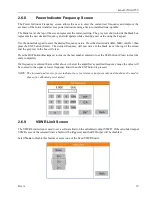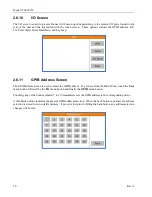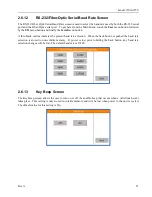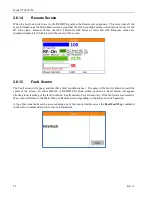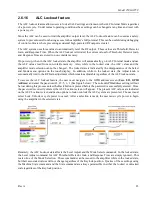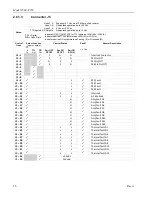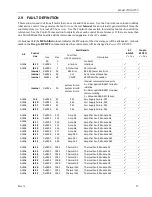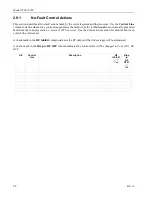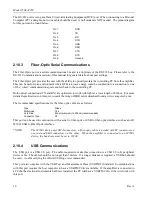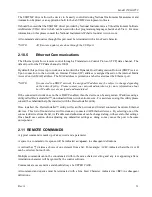
Model 2500A225C
30
Rev A
The RS-232 port is set up as a Data Circuit-terminating Equipment (DCE) port. When connecting to a Personal
Computer (PC) a straight one-to-one cable should be used. A null modem is NOT needed. The pinout diagram
for this port can be found below.
Pin 1:
DCD
Pin 2:
TD
Pin 3:
RD
Pin 4:
DTR
Pin 5:
GND
Pin 6:
DSR
Pin 7:
CTS
Pin 8:
RTS
Pin 9:
Unused
2.10.3
Fiber-Optic Serial Communications
The Fiber-Optic port is a serial communications bus and is a duplicate of the RS-232 bus. Please refer to the
RS-232 Communications section of this manual for general details about port settings.
The Fiber-Optic port provides the user with the ability to optically isolate the controlling PC from the amplifier.
This can be useful in an environment where RF/microwave energy could be coupled onto a connection to one
of the “wired” communications ports and fed back to the controlling PC.
Both optical connections (TX and RX) are optimized to work with light at a wavelength of 820nm. For more
detailed specifications on this port, consult the Avago HFBR series datasheet found at www.avagotech.com.
The recommended specifications for the fiber-optic cable are as follows:
Type:
Glass
Multi-mode:
Yes
Core Size:
50um (minimum) to 200um (recommended)
Connector Type:
ST
This port can be used in conjunction with a serial to fiber-optic or USB to fiber-optic interface, such as an AR
IF7001 USB to Fiber-Optic interface.
*NOTE:
The IF7001 device uses SMA connectors, a fiber-optic cable is needed with ST connectors on
one end and SMA connectors on the other. When the amplifier is connected to an IF7001
device, the baud rate must be set to 19200.
2.10.4
USB Communications
The USB port is a USB 2.0 port. The cable required to make this connection is a USB 2.0 A-B peripheral
device cable. The cable should be no longer than 5 meters. If a longer distance is required, a USB hub should
be used. A cable carrying the official USB logo is recommended.
This port also complies with the USB Test and Measurement Class (USBTMC) Standard. Communications
with this port requires the host computer to have a USBTMC driver available. If the amplifier is connected to
a PC that has National Instruments LabView installed, the PC will have a USBTMC driver that will work with
this port.
Summary of Contents for 0053007
Page 2: ......
Page 4: ......
Page 6: ......
Page 18: ...Model 2500A225C iv ...
Page 28: ......
Page 70: ...Model 2500A225C 46 Rev A ...
Page 80: ...Model 2500A225C 56 Rev A Figure 4 7 SMA Module Input Figure 4 8 Final Module RF Output ...
Page 82: ...Model 2500A225C 58 Rev A ...
Page 84: ...Model 2500A225C 60 Rev A ...
Page 86: ......




